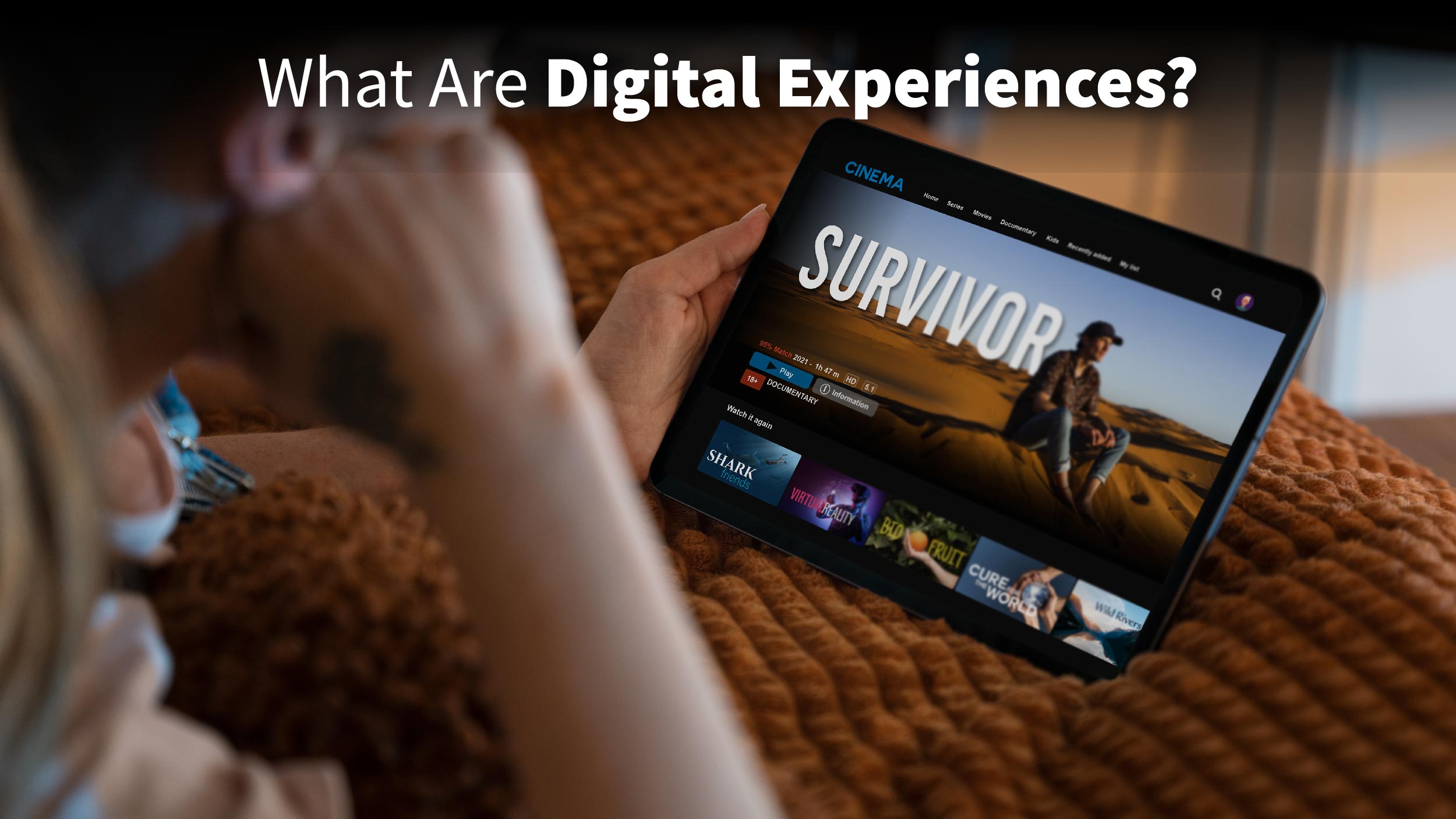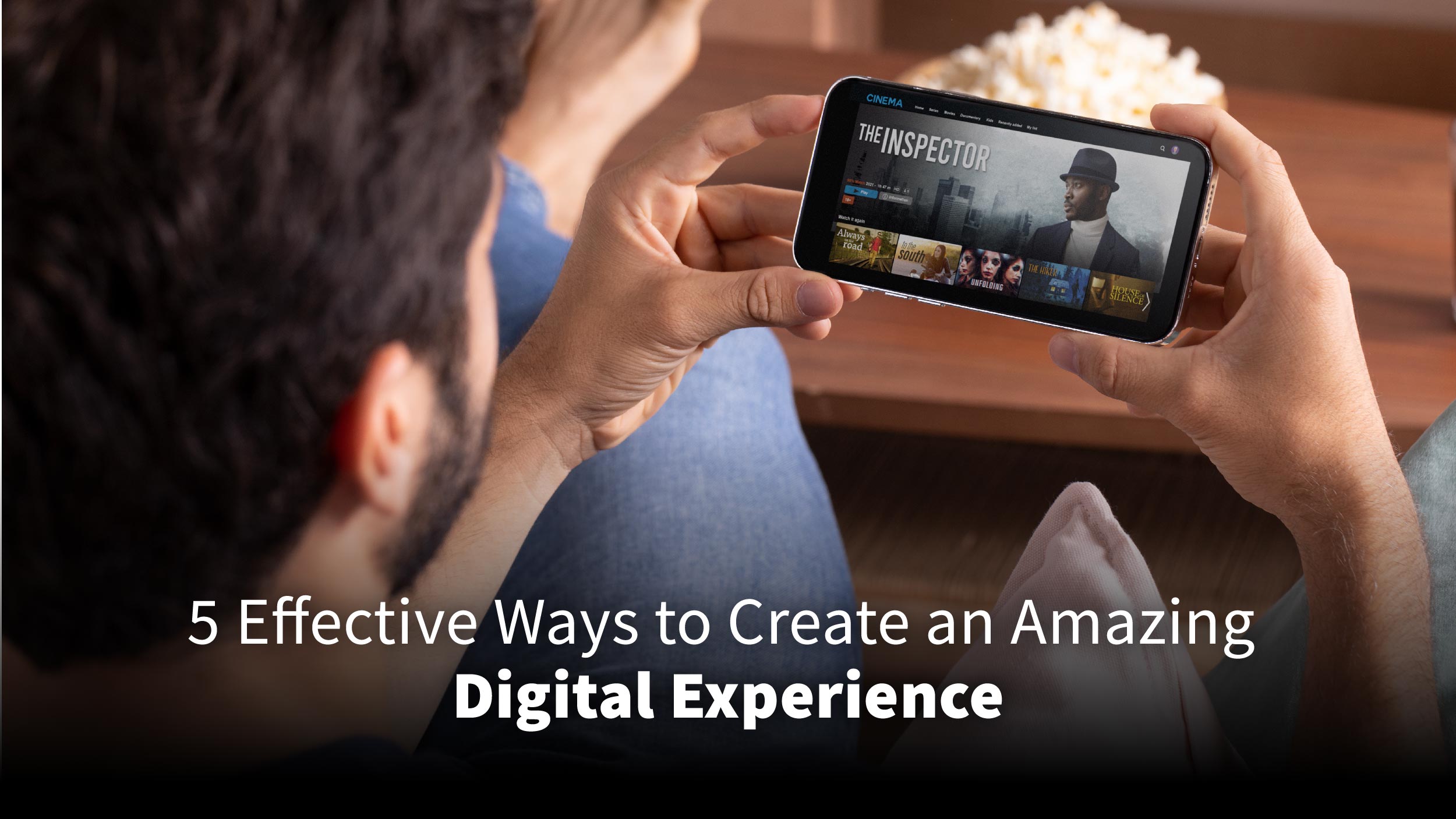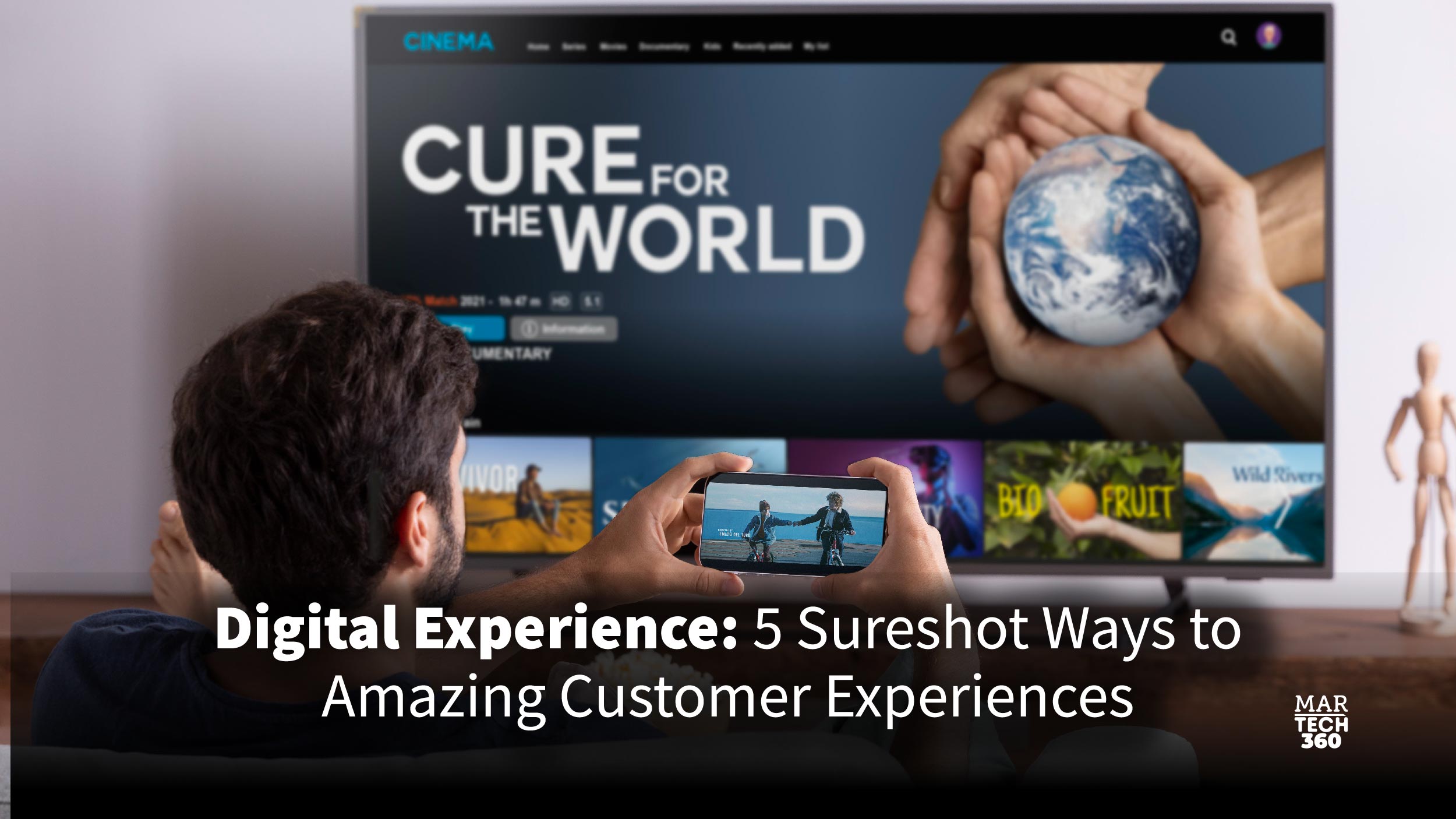Websites, mobile apps, e-commerce sites, social media content, smart devices, and even chatty AI companions. They all work together to create a mind-blowing digital experience for customers, partners, and employees interacting with organizations. It’s like stepping into a virtual wonderland where every click, swipe, and interaction matters.
Organizations are racing to optimize their digital touchpoints in this fast-paced, digitized world. Why, you ask? 81% of consumers anticipate faster service, and 73% anticipate greater customization. And let’s face it, we’re practically living our lives online these days. So let’s dive into this article to learn more about how you can find ways to create lasting customer journeys.
What Are Digital Experiences?

Digital experiences are interactions that take place through digital technology between people and organizations. These experiences can be found on a variety of platforms, including websites, mobile apps, and smart device interactions. The Internet and other modern technologies enable businesses to offer unique services in addition to digitizing paper-based operations, thereby enabling digital experiences.
It’s critical to understand that digital experiences and digital consumer experiences are distinct. Digital customer experiences include every digital interaction a person has with a company, whereas digital experiences are individual interactions. Businesses that concentrate on enhancing the digital customer experience seek to improve the user interface, mobile responsiveness, design, communication strategies, and real-time data delivery across all digital touchpoints.
Also Read: Contextual Targeting: Definition, Types, and Advantages
5 Effective Ways to Create an Amazing Digital Experience
 Creating an amazing digital experience requires careful consideration and implementation of various strategies. Here’s an elaboration on each point, supported by information from credible sources:
Creating an amazing digital experience requires careful consideration and implementation of various strategies. Here’s an elaboration on each point, supported by information from credible sources:
1. Personalization through AI-driven recommendations
Personalized customer engagement is a key aspect of creating an amazing digital experience. By leveraging AI-driven recommendations, organizations can provide tailored content and product suggestions to users based on their preferences and behavior. This enhances user engagement and satisfaction.
With its AI-driven recommendation engine, which tailors user experiences by examining data like watching patterns, search terms, and content interactions, Netflix is a prime example of successful personalization. Netflix uses deep learning models in conjunction with collaborative and content-based filtering to customize its home page, genre recommendations, and thumbnail images to each user’s personal preferences.
A/B testing guarantees that the system is continuously improved, increasing user retention and happiness by effectively displaying material that suits each user’s individual preferences.
2. Seamless cross-device experiences
In today’s multi-device world, providing a seamless experience across different devices is essential. Users expect to start an activity on one device and seamlessly continue it on another without any disruptions. This can be achieved through technologies like cloud syncing and responsive design.
For example, Spotify offers a reputable example of a digital experience that is fluid across devices. Customers can begin listening to a playlist on their phone while driving, carry on uninterruptedly on their desktop computer at work, and then easily transition to a smart speaker at home.
Spotify Connect, which lets users manage playing on several devices from their app, makes this fluidity possible. A seamless and continuous listening experience is offered by the uniform user interface and device synchronization, which guarantee the preservation of playlists, song progress, and user preferences irrespective of the device being utilized.
3. Streamlined ordering and return processes
Simplifying the ordering and return processes is crucial for improving the digital experience. Organizations should focus on making these processes intuitive, efficient, and hassle-free.
Amazon, known for its customer-centric approach, offers a seamless ordering and return process with just a few clicks.
4. Innovative use of technology
Leveraging innovative technologies can create mind-blowing digital experiences. Organizations can think outside the box and utilize technologies like chatbots, virtual reality, augmented reality, and voice assistants to engage users in unique and immersive ways.
For example, Casper, a mattress company, created a chatbot named Insomnobot3000 to provide companionship during sleepless nights.
5. Unified interface for multi-channel interactions
Providing a unified interface for customer interactions across various digital channels is essential for creating an amazing digital experience. Tools like SimpleChat allow customer service representatives to conduct interactions on multiple social media and digital channels through one unified interface. This streamlines the customer service process and ensures a consistent and seamless experience for users.
Future of Digital Experience
The potential of digital experiences to provide highly customized, smooth, and networked interactions across several platforms and devices is where their future resides. Businesses will be able to more accurately predict user pain points as AI and machine learning technologies develop, enabling them to provide services and content that are both timely and advantageous in the long run. By offering simple and intuitive experiences, this progression promises to raise customer satisfaction and ultimately increase engagement and loyalty.
Moreover, the amalgamation of nascent technologies such as virtual reality (VR) and augmented reality (AR) can generate captivating encounters that transform how consumers engage with companies. By concentrating on these advances, businesses may promote stronger relationships with their audience, accelerate growth, and maintain their competitiveness in an increasingly digital world.


Comments are closed.